Would you like to learn how to install the Python virtual environment on a computer running Windows? In this tutorial, we are going to show you all the steps required to install the virtual environment of Python on Windows.
• Windows 2012 R2
• Windows 2016
• Windows 2019
• Windows 10
• Python 3
Windows Playlist:
On this page, we offer quick access to a list of videos related to Windows installation.
Don't forget to subscribe to our youtube channel named FKIT.
Windows Tutorial:
On this page, we offer quick access to a list of Windows tutorials.
Tutorial Windows - Python Installation
Access the Python website and download the latest version of the Python installer.
In our example, we downloaded the file named: Python-3.8.4-amd64.exe
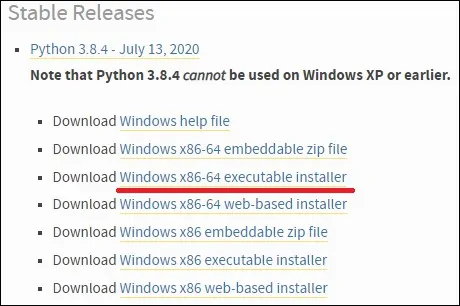
As the administrator, start the Python installation.
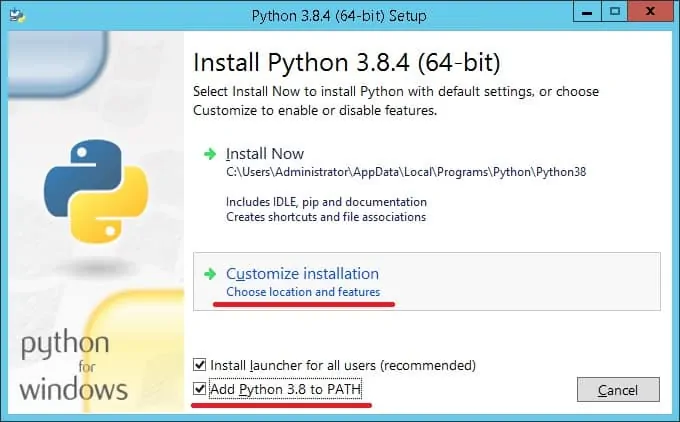
Select both checkboxes on the bottom of the screen.
Click on the button to customize the Python installation.
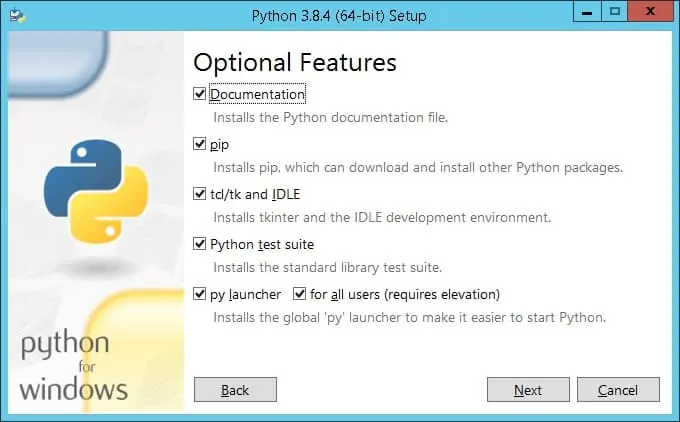
Select all checkboxes and click on the Next button.
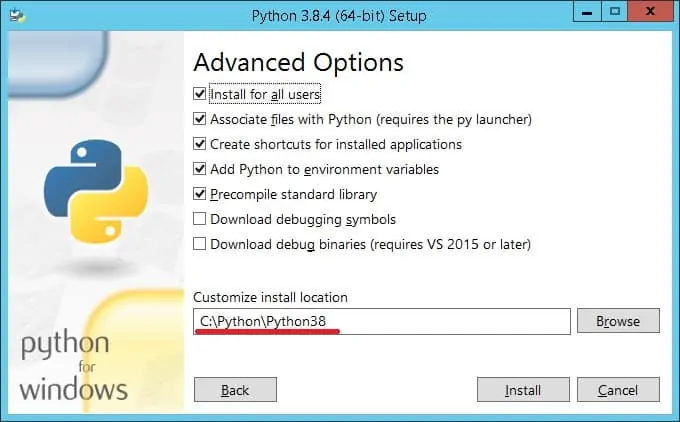
Select the checkbox named: Install for all users.
Change the Python installation path to the Root of drive C.
Click on the Next button.
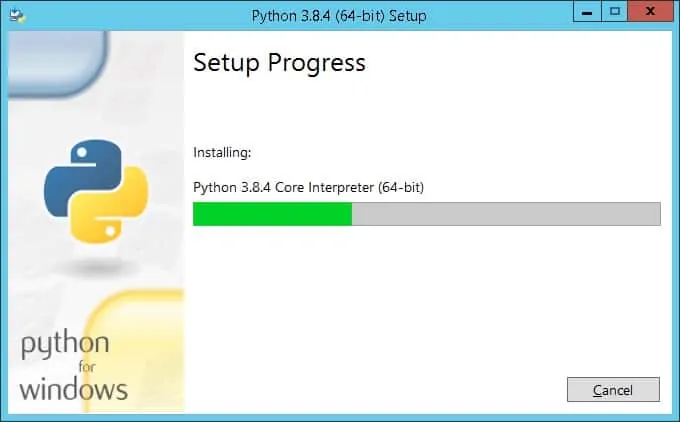
Wait for the Python installation to finish.
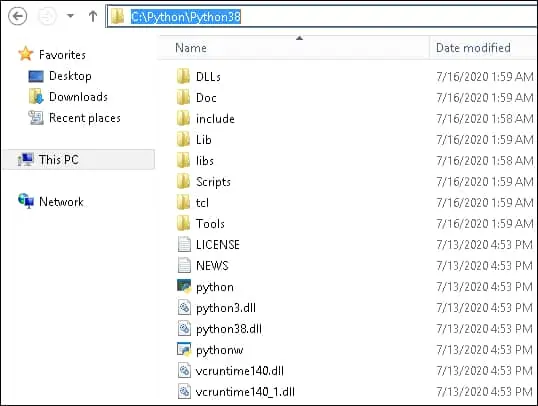
In our example, Python was installed on the following directory.
Reboot the computer.
Congratulations! You have finished the Python installation on Windows.
Tutorial Windows - Installing the Python virtual environment
Start a new DOS command-line prompt.

Create a directory to store the Python virtual environment projects.
Create a Python virtual environment.
Verify the content of the virtual environment directory.
Here is the command output.
Start using the Python 3 virtual environment.
The command line prompt should change.
Verify the Python version being used in the virtual environment.
Here is the command output.
Verify the absolute path to the Python command.
Here is the command output.
Verify the PIP version being used in the virtual environment.
Here is the command output.
Install the desired libraries in the Python virtual environment.
In our example, we used the PIP command to install the ART library.
Start a Python prompt within the virtual environment.
Here is the command output.
Test the Python library installed.
Here is the command output.
Stop the Python virtual environment.
Keep in mind that Python libraries installed inside the virtual environment were not installed outside the virtual environment.
Congratulations! You have finished the Python virtual environment installation on Windows.
